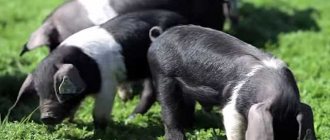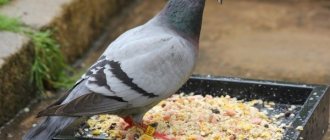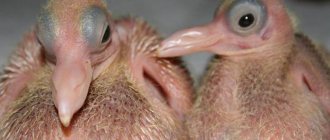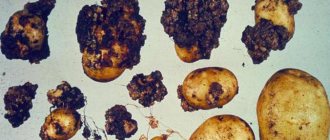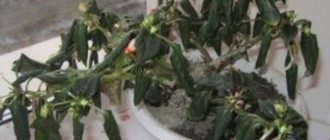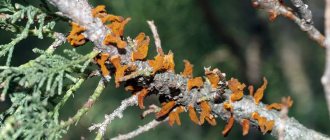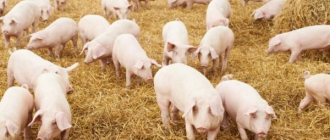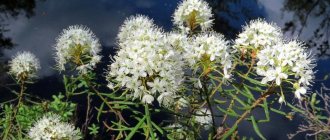Flight in pigeons The most common contagious disease of birds is Newcastle disease. It, like smallpox, has several names that are known to all owners of feathered pets:
- avian pseudoplague;
- Asian bird plague;
- Doyle's disease;
- twirly.
The last name is by no means accidental; it is due to the fact that sick birds begin to make circular movements without leaving one place. The infection affects all birds without exception, from pigeons to turkeys. Several thousand birds, both domestic and wild, die from pseudoplague per year. Flight in pigeons, which requires immediate treatment, occurs frequently and often ends in death.
Causes of the disease
The whirlwind is caused by ribonucleic acid, which contains a paramicrovirus. It has no resistance to elevated temperatures; death occurs at +56 degrees. But freezing is not dangerous for the virus. Zero temperature causes preservation of the microorganism, while its ability to reproduce is preserved even at +1, and for four months. The pathogen can remain viable for up to 6 months, while remaining in the body of a deceased bird during this time. Inactivation occurs under direct sunlight, but the virus is exposed to phenolic, cresol or formaldehyde disinfection solutions, causing its death after 15 minutes.
Vertyachka is divided into several strains:
- weak, non-infectious virulence in the lategenic strain;
- mesogenic has an average degree of virulence;
- the most contagious strain is the velogenic one.
The airborne route is the most common route for the transmission of pseudoplague from one pigeon to another. Distribution through food, water, cleaning equipment, and bedding materials is also possible. Sick individuals act as an infectious source.
It is important to know that it is common for viruses to spread at a time when the incubation period is underway and clinical symptoms have not appeared. The danger lies in the impossibility of identifying sick birds and then isolating them. This, in turn, leads to the fact that Newcastle quickly spreads to the entire population.
A pigeon has a whirlwind.
Not only pigeons suffer from a whirlwind; chickens, turkeys, quails, and even parrots are also susceptible to the disease. It is not uncommon to observe outbreaks of the disease in wild birds. The most dangerous situation is when city pigeons are affected, which can spread the infection to poultry and people. For preventive purposes, all contacts with wild animals are limited, especially for children. The disease is transmitted from pigeons to poultry, which can result in the death of the entire flock. Pseudoplague outbreaks are most dangerous when they spread across large farms and poultry farms.
History of the disease
People first recorded symptoms of this disease in wild pigeons living on the Indonesian island of Java in 1926. The worm spread very quickly among the birds, destroying entire flocks within a few weeks.
The causative agent of the disease is paramyxovirus, which is localized in the bird’s brain, disrupting the coordination of its movements. Due to the inability to eat on its own, the pigeon dies within 9-10 days after infection.
The causative agent of the disease is very resistant to changes in the state of the external environment, easily tolerates heat, but dies when the temperature rises to +56 degrees Celsius. When the temperature drops to 0, the paramyxovirus self-preserves, and in frozen poultry carcasses it remains viable for six months.
Newcastle disease can be transmitted to poultry, primarily chickens. This allowed the paramyxovirus to spread throughout the world in a very short time, becoming a serious problem for people involved in amateur or industrial breeding of pigeons.
Flight in pigeons: symptoms
The whirligig is characterized by rapid development. The incubation period lasts four days, and then the first signs associated with damage to the central nervous system are observed.
After 3 days, it no longer makes sense to treat the bird.
All symptoms of whirling are divided into several stages:
Stage 1
Characterized by loss of appetite and severe thirst. The feathers of the individual are ruffled and stick out in different directions. There is redness in the eyes and spots on the beak. Then the pigeon becomes less active, weak, and becomes ruffled.
Tiredness in pigeons, stage 1 of the disease
Stage 2
Here the neurological nature of the lesions is observed. At this stage of pseudoplague, digestion is disrupted. The stool may be white or green with mucus particles. A specific, convulsive movement in a circle begins, the bird loses orientation in space (it is not able to peck food, it does not hit it with its beak).
Tiredness in pigeons, stage 2 of the disease
Stage 3
Inflammation affects the brain area. A curvature of the cervical spine appears, as a result of which the beak lifts up. The affected bird spins around, and there are cases of falling from perches.
Twitching in pigeons at the last fatal stage 3 of the disease
It is possible to save the life of a sick bird
For many years it was believed that it was impossible to cure the whirligig and sick birds were simply destroyed, disposing of their bodies, which were sources of infection for healthy pigeons. Modern veterinary rules require compliance with this norm even now, although breeders of expensive ornamental birds are trying by all means to save the lives of their pets.
Veterinarians have developed several schemes telling how to treat a sick bird and methods of prevention. With the help of broad-spectrum medications, it has become possible to save the lives of sick pigeons, turning the disease into a chronic form.
We will describe the use of a number of medicines and vaccines for the treatment of whirligig below. Pigeon breeders should take into account the fact that getting rid of the disease using folk remedies does not give any results at all, but only slightly prolongs the agony of the sick bird.
Remember that it is impossible to treat whirligig in pigeons with any of the medicines existing today. Recovery requires the use of several medications at the same time, as well as vitamins to strengthen the immune system of the sick pigeon.
Tiredness in pigeons: treatment with medications
Not every Newcastle case ends in the death of pigeons. With timely treatment, the livestock can still be saved. It is important to remember that the virus can also affect a person whose illness occurs in the form of the flu. But if all precautions and hygiene are followed, infection is unlikely. But the transmission of the virus to the rest of the poultry population can only be stopped by timely treatment.
To get rid of vertigo using medications:
- Medicines against viruses. It is the main method of treating vertigo. First of all, they use Immunofan and Fosprenil. Interferon-containing products have high antiviral activity and help the body devote all its strength to fighting the disease. A veterinarian prescribes medications. There are two routes of administration: intramuscular and oral. It is important to remember that both medications should not be taken at the same time.
- Use of nootropic drugs. First of all, they use Piracetam, whose effects can relieve a number of neurological symptoms. ¼ of the capsule is dissolved in water and taken by the sick individual.
- The use of multivitamin complexes Katazol, Vikasol, Gamavit, containing vitamins that improve the functioning of the immune system in birds. Additional means help the birds’ bodies cope with the whirligig much faster.
- The use of prebiotics and enterosorbents will also improve the condition of sick individuals. The disease affects the gastrointestinal tract, and therefore using Sporovit, Karsil and Linex can help the bird overcome the disease.
- The use of prophylactic agents is a very important factor in preventing the spread of the disease. This step implies timely vaccination with La-Sota or Boron-74, which protect young livestock under one month of age.
Timely vaccination of healthy individuals
The only truly reliable way to protect domestic pigeons from infection with Newcastle disease is timely and complete vaccination of the livestock. Vaccination does not provide a complete guarantee that the bird will not get whirligig. But the course of the disease will be milder and there is the possibility of a complete cure.
Poultry should be vaccinated at least once every six months. The La Sota vaccine is considered the most effective for large poultry farms, one bottle of which is enough to vaccinate a thousand pigeons.
The vaccine is diluted with boiled water and dropped into the nose of each pigeon at the rate of 2 drops per bird. The first time after vaccination they will feel unwell, and individuals with weakened immune systems may even die.
But within a week after receiving the vaccination, pigeons receive immunity to Newcastle disease, which will last for six months. It is recommended to vaccinate birds against whirligig in spring and summer, for which, in addition to La Sota, you can use Bor-74, VGNKI, GAM-61 and others.
Tiredness in pigeons: treatment with folk remedies
Among poultry farmers who keep pigeons, there is an opinion that herbs and some time-tested methods can be used against whirligig. One such recipe is a mixture of egg yolks with milk, ground garlic and grain feed. The drug is administered orally for several days. Some veterinarians recommend giving belladonna as a homeopathic remedy. Belladonna helps to overcome this insidious disease, and with excellent results.
Smallpox
The disease is caused by an ultravirus, which is activated when interacting with pigeons. Infection is through food and water. The outer cover and internal organs are affected. Very high mortality rate. One bird can infect the entire flock.
There are 3 types of smallpox:
- cutaneous – areas near the beak, eyes, ears, paws are affected;
- diphtheria - affects the mucous membranes;
- mixed – combines symptoms of both types.
Symptoms
Characteristic features:
- drowsiness;
- apathy;
- difficulty breathing;
- red spots all over the body;
- mucous discharge from the nose and eyes;
- in severe forms, the goiter and esophagus are affected.
The risk of contracting smallpox comes especially with the arrival of spring. Birds at risk include those lacking vitamin A.
Treatment
Inflamed areas are treated with a solution of 2% boric acid, furatsilin or Lozeval. The resulting crusts are smeared with iodine. To moisturize, apply baby cream. They give the bird water if it does not want to drink on its own.
There are no special drugs against smallpox. It is recommended to treat pigeons with Albuvir and broad-spectrum antibiotics, for example, from the tetracycline group. The course of treatment is 7 days. After treatment there is a recovery period, the bird is given vitamins and amino acids.
Forecasts
Smallpox is not always curable, but with adequate and timely treatment the prognosis is good.
Prevention
Activities that do not guarantee the prevention of smallpox, but reduce the risk of disease:
- compliance with sanitary and hygienic standards, routine disinfection;
- good nutrition;
- quarantine for new birds;
- treating any skin damage with antiseptics;
- extermination of insects that carry smallpox.
The best way to prevent smallpox is vaccination. After administration, pockmarks appear at the injection site; after a week they disappear.
Processing and disinfection
As soon as a sick bird is discovered, it must be housed separately to avoid contact with healthy birds. It is necessary to disinfect the pigeon room. Thoroughly treat all surfaces and equipment used for cleaning. These activities are carried out for 5 days from the moment a sick pigeon is discovered, and then another 14 days after the last individual recovers.
Another preventive measure is mandatory disinfection every 30 days, even if there are no manifestations of any diseases.
It is important to remember that not only sick birds can spread the virus. It is carried on eggshells and inventory items. It also affects things in the immediate vicinity of the dovecote. A person can also become a source of infection, as well as protective clothing that has not undergone timely disinfection. No less dangerous spreaders of pseudoplague are feather mites that parasitize pigeons.
It is important to remember that to neutralize each strain, you need your own disinfectants.
Prevention of whirligig in pigeons
The survivability of viruses has already been discussed in the article. Ethers, heat and disinfection solutions pose a particular danger to it. When carrying out the relevant work, you need to remember:
- bleach 3-4% – death of the virus within 3 minutes;
- formalin solution – 1% – death after 30 minutes;
- heating to +55 degrees – death after 30 minutes.
How to carry out complex disinfection:
- Low-value equipment used in poultry care must be destroyed.
- The livestock is transferred to another room while the main dovecote is being treated with toxins.
- Cleaning perches and walls using scrapers.
- Wash the above-described parts using a solution of laundry soap at the rate of 0.5 kg per 10 liters of water.
- Carrying out disinfection.
- Ventilation of premises.
- Washing food and water containers.
- As an additional means, blowtorches are used, whose flame destroys viruses and parasitic insects that may remain in cracks, crevices or other places with difficult access.
- At the last stage, you can add new food and fresh water, and then transplant the birds.
There are several modern, but expensive disinfection enterprises that are carried out without stocking. This includes a number of gaseous agents that treat not only the room, but also the feed, as well as the feather cover of the bird. There is one nuance here: complete disinfection will be successful only if the dovecote is completely sealed and the temperature is not lower than +15 degrees.
How to treat a dovecote after turning
The virus that causes whirlwind in pigeons is very stable in the external environment. In boiling water the virus is inactivated after a few seconds, in water with a temperature of 90-95 ° C - after 40 minutes, so there is no point in “scalding” the dovecote. By the time the boiling water reaches the wall, it will have time to cool down.
Formaldehyde vapor will take effect after an hour, a 0.5% sodium hydroxide solution will take effect after 20 minutes, and bleach with 1% active chlorine will take 10 minutes. Based on these data, it is most advisable to use bleach.
But before using a disinfectant solution, all droppings must be removed and burned from the dovecote. You also need to remember to move the pigeons to another place during processing. It is better to “drown” removable equipment in a bleach solution. Spray the walls and nest boxes with lime solution. It is better not to skimp on the liquid and spray until the surfaces become wet. After this, the solution should be allowed to dry naturally. The equipment is removed from the solution and thoroughly washed with clean water.
There is a method for sterilizing a dovecote using gaseous disinfectants. The advantage of this method is that the gas can penetrate everywhere. Disadvantage: it is difficult to ensure the necessary sealing of the dovecote and the air temperature must be at least + 15 °C. Especially when you consider that usually at least half of this structure is occupied by a mesh enclosure.
For gas disinfection, a mixture of dry iodine and aluminum powder is used. The norm is 0.1 g of iodine and 0.03 g of aluminum per 1 m³. Mix the mixture thoroughly, pour onto a saucer and add a drop of hot water.
Attention! There should be no one alive in the dovecote at this time.
After half an hour, the dovecote must be thoroughly ventilated.
A similar procedure can be carried out with chlorine. To do this, take 1 g of fresh bleach with an activity of 36% and mix it with 0.1 ml of turpentine. 15 minutes are enough for processing. After the procedure, the room is ventilated.
Since the whirligig is very contagious and even after isolating obviously sick pigeons, new sick ones will appear, the dovecote is disinfected every 4-7 days. Treatments are stopped 30 days after recovery or death of the last sick pigeon.
Is the spinner dangerous for humans?
The disease does not pose a danger to people. But when infected, the following unpleasant symptoms may occur:
- conjunctivitis;
- inflammatory processes in the lymph nodes;
- symptoms indicating influenza.
It is recommended to prevent contact between small children and infected birds. This is due to the fact that the body is not yet fully formed, and therefore the disease takes on a more severe form than in an adult.
The story of one life on the balcony.
One fine evening I saw this.
On your balcony. I live on the 5th floor.
Unfortunately, the moment when these monsters were born was at work.
This is today's photo. I bought food for the parrots. I don't think the pigeons will be offended by this.
I have never seen pigeon chicks in my life. And then they settled down right on the balcony.
This is my first post. Do not judge strictly.
Prevention measures
In the final part of the article, it remains to highlight possible preventive measures that can prevent the spread of the whirlwind. These include:
- providing livestock with vitamin B, which contain grain feed;
- mandatory distribution of green mass.
An important role is assigned to a properly balanced diet, which is protection against various diseases in poultry. Young animals under 30 days of age are vaccinated. It provides lifelong protection against whirling. Drugs are selected by veterinary specialists only after completing an examination of the entire livestock. Vaccination is carried out before infection occurs; if it is already present, then vaccination is useless.
Vaccination of pigeons against whirligig
Vaccinate with the following medications:
- La-sotoy;
- Borom-74;
- Nobilis
- Gamom 61.
Twitch in pigeons, the symptoms and treatment of which are discussed above, causes enormous harm. These are economic losses on farms, as well as the loss of small bird species, and not only among pigeons. Despite the fact that there are a number of vaccines and drugs that facilitate treatment, pseudoplague is one of the most common diseases that affects both domestic and wild birds. Mortality among individuals numbers in the thousands, and pigeons are no exception.
Dangerous pathogen for livestock
It is believed that without timely treatment, the mortality rate among pigeons infected with whirligig reaches 100%, although this is not entirely true. In approximately 10% of cases, birds manage to recover their vital functions on their own, and they may look like individuals affected by another infectious disease.
At this time, paramyxovirus develops in their body, affecting not only the brain, but also other organs. There is active release of the pathogen through fecal matter or through respiration. In fact, the pigeon becomes a hotbed for the spread of the disease and can cause enormous harm to its relatives kept in the poultry house.
Despite the temporary improvement, such a bird will still die within a short time, so it must be isolated from other pigeons, kept in a separate cage, or disposed of.
Possible complications
About 30% of adults with chickenpox develop the following complications:
- Bacterial superinfection of the skin - occurs due to the negative effects of streptococci and staphylococci, manifests itself in the form of boils, phlegmons and abscesses, and is removed surgically;
- Pneumonia - develops when the lungs are infected by a virus and bacterial infiltrates appear;
- Internal organs are affected - the liver, spleen, and pancreas are most often affected;
- The central nervous system is depressed - encephalitis may develop, sometimes balance is disturbed;
- Hepatitis - extremely rarely occurs specifically with chickenpox; it is usually recorded in patients with HIV.
Possible complications may appear immediately, or temporarily disguise themselves as an ongoing illness. Thus, the patient can learn about damage to the central nervous system no earlier than 3 weeks after infection with chickenpox, when the symptoms associated with this infection begin.
Causes of chickenpox in adults
Chickenpox in both children and adults develops after contact with a carrier of the herpes simplex virus type 3. This virus is the main cause of the disease.
To avoid infection and not provoke it in another person, you must:
- Cover your mouth and nose when sneezing and coughing;
- Avoid places with large crowds of people;
- Periodically ventilate and wet clean the room;
- Observe personal hygiene rules - wash your hands and face with soap after visiting public places.
The virus does not live outside the body, so you can only become infected through close and direct contact with a carrier. The source of the disease can also be a person who has had herpes zoster.
Why is the chicken's neck twisted?
Both Newcastle disease and vertebral disease affect the nervous system. Because of this, chickens’ necks may become twisted, legs and wings may be paralyzed, and pinpoint hemorrhages may occur in the internal organs. Another manifestation of the disease is loss of orientation.
The first signs of illness: drowsiness, loss of appetite, disheveled hair. After some time, signs of damage to the respiratory system appear, and mucus is released from the chicken’s beak and nostrils.
“Whirly”, like Newcastle disease, has similar symptoms - the chicken’s neck curls in an unnatural way. However, due to the absence of a pathogen, the disease is not considered contagious, and sometimes even treated.
Very rarely, a bird's neck can be twisted by injury.
Treatment options
Flight in pigeons was considered incurable, so when a sick bird was discovered, it was disposed of.
Birds can be cured with the immunostimulant Fosprenil, which is especially effective in combination with the drugs Sporovit and Gamavit.
There are effective ways to treat pigeons if the disease is detected early. If it is not possible to consult a veterinarian, then you can find recommendations on the Internet from pigeon breeders and doctors on how to treat whirligig in pigeons. Adults are more likely to be cured than young ones. It is impossible to cure a pigeon suffering from avian pseudoplague with one drug - an integrated approach is necessary.
There are 2 main treatment regimens for vertigo, each involving the use of several medications simultaneously:
- The bird receives the main treatment with the immunostimulant Fosprenil. The drug has a dual effect: it provokes the immune system to produce interferon and fights the virus. In the first 2 days of treatment, dilute 0.5 ml per 1 liter of water, subsequent days the dose is reduced - 0.3 ml per 1 liter of water.
It is not worth giving more than 3 immunostimulants at once - this will be an excessive burden on the bird’s body.
Fosprenil shows high effectiveness in combination with the drugs Sporovit and Gamavit.
“Gamavit” is an immunomodulator that improves metabolic processes in the body, brings the blood formula to normal values and has a biotonic effect. The drug is diluted in a proportion of 0.5 ml per 1 liter of water and given for 5 days.
"Sporovit" contains a specially bred strain 12B of Bacillus subtilis (saprophytes). The medicine acts as an anti-inflammatory and immunostimulating agent. The drug improves intestinal function in birds and improves the absorption of nutrients. “Sporovit” has a positive effect on the health of young pigeons: it increases immunity and promotes full development. The medicine is diluted in water: a dose of 0.03 ml per 1 bird, that is, per liter of water for 30 pigeons you need to dilute 1 ml of the drug in water at room temperature per day. Give within a week.
- Veterinarians prescribe Piracetam to birds, which helps restore blood circulation in the brain. "Karsil" is given to improve the functioning of the liver and stomach.
To treat whirligig in pigeons, antibiotics are used, for example, Tetracycline and other broad-spectrum antibiotics. They are used to prevent complications and suppress bacterial microflora. During and after treatment, you need to give the bird the vitamin complex “Chiktonik” and the medicine “Intestevit” to normalize the microflora after the main medications.
Treatment with folk remedies does not have a high effect due to the fact that the disease affects several organs of the bird at the same time.
In case of illness, the first time it is necessary to feed and water the birds, otherwise, even with proper treatment, they may die from exhaustion.
A sick bird must be fed and watered: the pigeon itself will not be able to eat or drink, so even with proper treatment it risks dying from exhaustion.
It is more convenient to feed and water the bird from a syringe or soaked bread crumb.
Treatment of any stage of whirligig in pigeons takes a lot of time and requires patience: it is important not only to give the pigeon medicine, but also to feed it by hand.
When the first signs of illness appear in pigeons, a thorough examination of each bird is carried out, sick individuals are isolated, a general cleaning of the dovecote is carried out using antibacterial agents, and the droppings are submitted for analysis to a veterinary clinic or veterinary station.
Every 2 days, the dovecote is treated with Deitran disinfectant. Treatment is carried out to destroy the pathogen that causes Newcastle disease. This product does not pose a danger to birds, so it can be used in the presence of pigeons.
Preventive actions
The main preventive measure, as with most other infectious diseases, is compliance with sanitary standards. A nutritious diet also reduces the likelihood of pigeons becoming sick with whirligig. Healthy pigeons have higher body resistance.
The vaccine against whirligig for pigeons is used if there are no individuals in the flock with obvious clinical signs of the disease. Since vertigo is caused by several strains of varying degrees of “viciousness,” several types of vaccines have been created. Some can only be used on adult pigeons. They are not suitable for young animals. Other vaccines are suitable for both young and adult pigeons.
General points also exist: a pigeon develops immunity within 4 weeks after vaccination. Pigeons must be vaccinated annually.
The number of doses in one bottle can also vary: from 2 to 50.
Classification of chickenpox in adults
Chickenpox is classified according to:
- The severity of the current;
- A type of illness.
If a disease is considered by whether the body tolerates it hard or easily, then the following are distinguished:
- Mild form - recorded in approximately 7-11% of cases. The temperature is low and almost never exceeds 38 degrees. Patients have no complaints of severe pain and fatigue, the number of rashes is minimal;
- The moderate form is typical for 80% of patients. The temperature rises to 39 degrees and does not drop below 38 for a long time. Signs of intoxication such as nausea, vomiting, weakness, and headache are observed. Joints and muscles ache, a rash covers most of the body, the skin itches;
- Severe form - diagnosed in only 10% of patients. At the same time, the temperature rises above 39 and 40 degrees. The patient complains of weakness, severe headache, nausea and vomiting do not stop. The rash covers all free areas of the skin, complications may develop.
Mild form Moderate form Severe form
Severe form of the disease is divided into:
- Hemorrhagic - affects patients with an insufficiently strong immune system, who have previously encountered hemorrhagic diseases, problems with blood vessels, diathesis, vasculitis, thrombocytopathy and bleeding disorders. A hemorrhagic rash, hematomas and bruises appear on the skin. The gums and intestines may begin to bleed;
- Bullous - the skin is covered with large flabby blisters - bullae. Each bubble is filled with cloudy liquid and covered with folds. At the site of the burst bubble, long-lasting wounds remain;
- Gangrenous - develops in patients with extreme exhaustion. The reason is lack of personal hygiene and poor care. The papules become infected and are joined by a secondary pathogenic microorganism. This leads to the formation of a black border of dead tissue cells around the papules. The patient has a high fever, the body signals about poisoning.
The typical form of the disease is characterized by similar symptoms:
The atypical form can also develop in different variations:
- Rudimentary;
- Gangrenous;
- Bullous;
- Hemorrhagic.
In the rudimentary form, the temperature rises no higher than 37.5 degrees, there is practically no rash, and acne has the form of spots or nodules. For those who are not aware of the symptoms of the disease in adults, chickenpox in its rudimentary form can go completely unnoticed.
Ticks and fleas
If preventive measures are not taken, pigeons can become infected with parasites - ticks and fleas. Birds suffer from anemia because parasites suck the blood out of them. Due to fleas and ticks, the entire livestock can die. Birds infected with parasites constantly clean their plumage and bathe in the sand. During this period, birds can still be cured. The next stage is feather loss - at this point it is too late to treat pigeons.
Treatment
Treatment measures depend on the type of parasite:
- Scabies mites. It makes its way inside the epidermis, causing inflammation. They fight the parasite using birch tar, tar soap and the drug Picochloran. The products are applied to skin pre-treated with Vaseline or glycerin.
- Pigeon bugs. They suck blood and transmit infectious diseases. If the birds have bedbugs, the entire dovecote is treated with trichlorometaphos; you can also use an aqueous emulsion of Trolene. Another effective means of control is treating surfaces with a blowtorch.
- Fleas. Infection occurs through droppings and litter. They carry infections. They are destroyed in the same way as the pigeon bug.
- Pere-eaters. They live in feathers. The bird itself destroys the feather eaters, but cannot kill those that sit on the neck and head. Feathers should be powdered with Pyrethrum - three times with an interval of one week.
Prevention
Treatment of dovecote with insecticidal preparations. They need to be used to powder perches and nests. The walls and floor are treated with a blowtorch.
